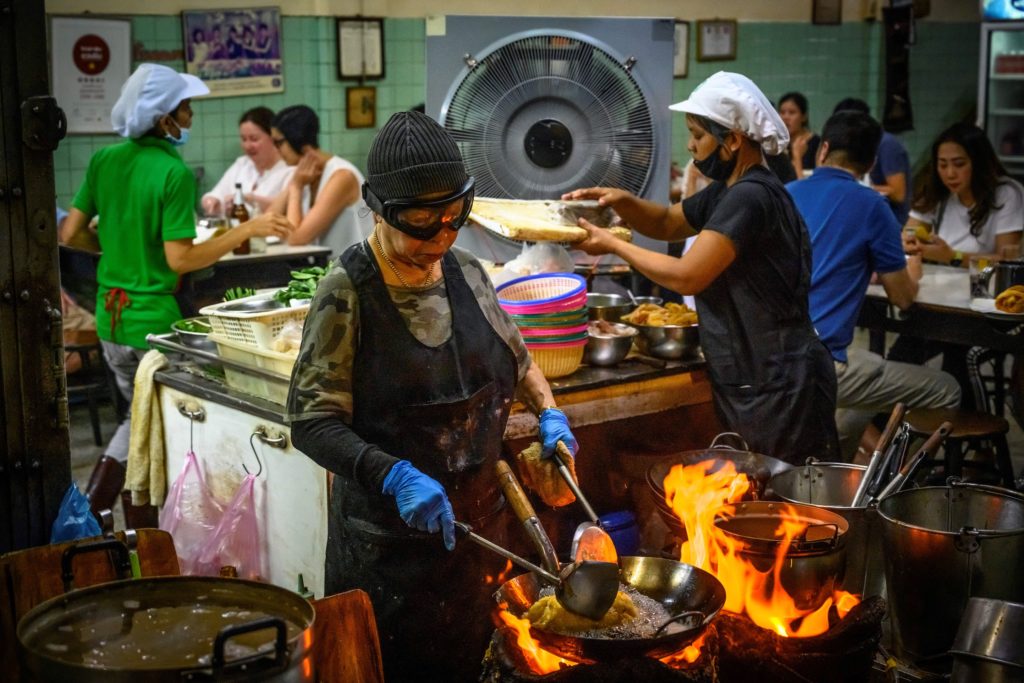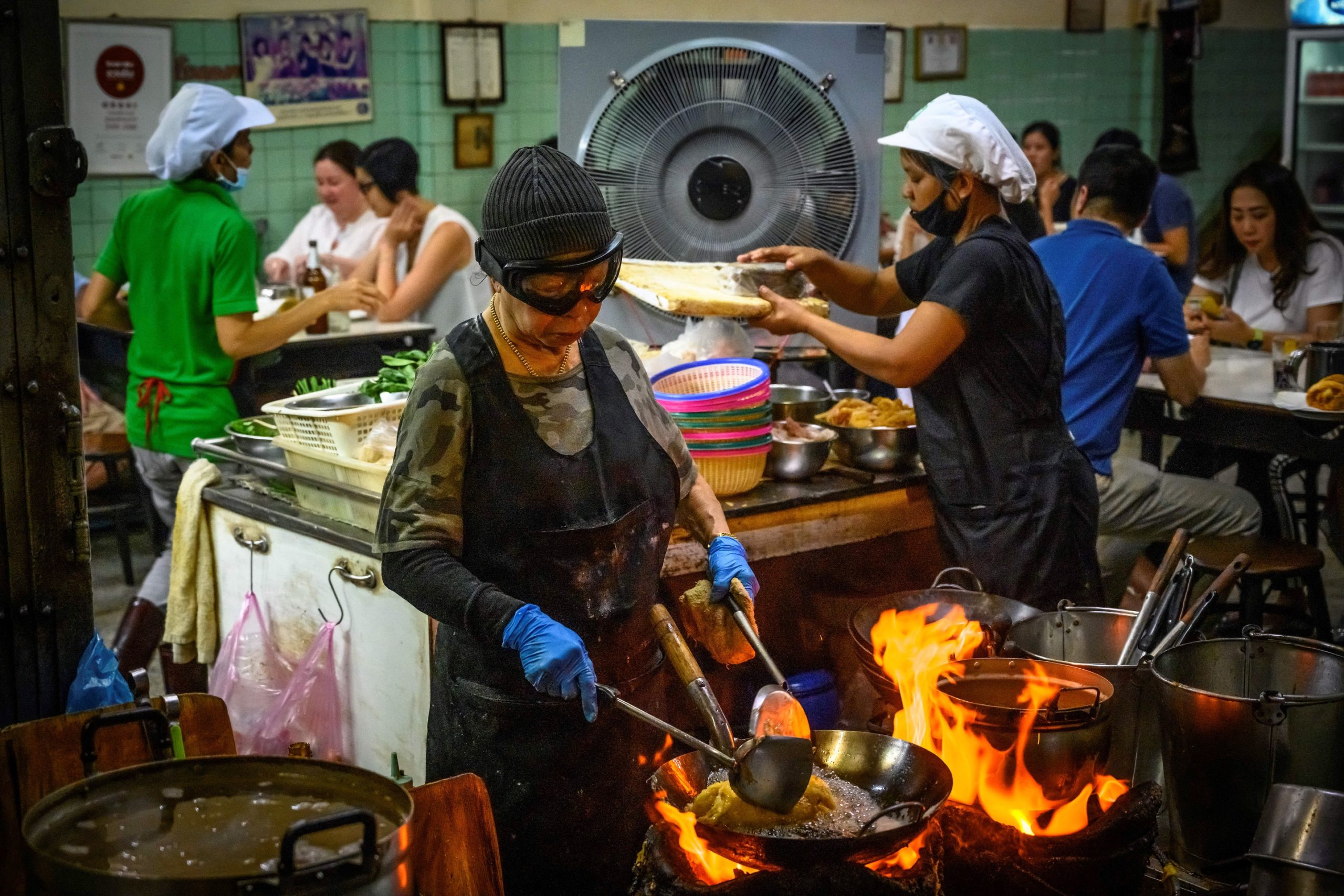The World’s Best Restaurants ranking has honored Japanese chef Natsuko Shoji with the title of “Asia’s Best Female Chef 2022.” It’s a distinction that not only draws attention to the need to highlight women chefs, but also to women chefs of Asian origin in this professional environment, who rarely get the same visibility as their male colleagues.
In 2015, chef Vicky Lau, head chef of Hong Kong restaurant Tate Dining Room, was awarded the title of Best Female Chef in Asia by the World’s 50 Best Restaurants ranking. To announce this news, French-language blog Food & Sens, from the Pourcels, two chef brothers, wrote in the introduction to its article: “She is a bit of an unknown entity among chefs, but if she received this title, we imagine that it is because she deserves it… let’s try to find out a little more about her… in any case, we can say that she already deserves a prize for her looks…”
It’s a statement that not only puts its foot in its mouth but that reveals much about how women continue to be perceived in the industry; female chefs find themselves in the position of demonstrating that their success is not down to their looks, but to their talent and professionalism.
The proof is in the pudding: Vicky Lau, who has become a true reference in fusion cuisine blending Chinese flavors and French techniques, was awarded two Michelin stars in 2021. In an interview with the South China Morning Post, this alumnus of the internationally renowned Le Cordon Bleu institute indicated that there is a long way to go to achieve parity in the male-dominated culinary world.
Another leading chef in Hong Kong, Peggy Chan, one of the first to offer vegetarian haute cuisine in Hong Kong, revealed to Chopstix & the City: “Unfortunately, there’s only a very rare breed of women who are capable of making it through the hours, the screams, the heat and physical pain, the sexist comments, foul language and very often feeling belittled.”
The place of Asian women in the kitchen is complex. In China, “they are still considered pillars of the family,” said DeAille Tam last year when she won the Asia’s 50 Best Female Chef award. “There are certain expectations of how much time they need to spend with the family and sacrifices have to be made,” said the chef who runs the gourmet restaurant Obscura in Shanghai.
The struggle for recognition of female chefs in Japan
In Japan, too, the task is difficult for women who want to succeed in professional kitchens, especially behind the counter of a sushi restaurant. Here, where the preparation of these bite-sized seafood dishes is a true culinary art, the idea “that women’s hands are too warm to keep raw fish fresh, or that their periods alter their sense of taste,” persists even among sushi chefs, and prevents many women from being seriously considered for the job, Agence France-Presse correspondent Natsuko Fukue found out. The share of women who have managed to become sushi chefs in Japan is less than 10%, although there is no official data.

This disparity when it comes to female chefs in the top eateries in Japan can even be spotted in the list of the 22 top starred women chefs in Asia, drawn up by the Michelin guide in March 2021. Only three Japanese women chefs are listed. Only one of them runs a restaurant dedicated to kaiseki cuisine, the traditional Japanese gastronomy that is executed around small portions including broth, sushi, sashimi, steamed vegetables. This is Akemi Nakamura, who heads up Nishitemma Nakamura, located in Osaka.
The awarding of the title of best female chef this year by Asia’s 50 Best to Natsuko Shoji is therefore not insignificant. The chef, who has already hosted stars such as David Beckham and famous artist Takashi Murakami in the past, has already been lauded with the title of best pastry chef. She runs a gastronomic dining establishment in Tokyo called Eté (French for summer), where she maintains a close connection between cuisine and the fashion world with creations that are jewel-like.
The chefs that paved the way
Compiled by Debbie Yong, editorial director of Michelin’s digital strategy in Asia, the “list” of 22 influential women chefs reveals a trend: more women chefs from Thailand and South Korea are in the spotlight. Some of them have paved the way by making their mark with a certain culinary style or even a whole new vision of food.
In Thailand, Supinya Junsuta, who is often called by her nickname, Jay Fai, the name of her food stall, is famous around the world because she managed to obtain a Michelin star in the Thailand guide with culinary repertoire of street food. But it’s neither her unique recognizable look with aviator goggles nor her age of 76 that is the main reason for her popularity. Visitors and locals alike are willing to wait hours for her crab omelet. Just watch the episode featuring her in the documentary series “Street Food Asia,” broadcast on Netflix, to understand the influence of this cook in the Thai culinary sphere.
In South Korea, it is Cho-Hee-sook who has strived for greater recognition of her native cuisine. First as a chef at the Korean Embassy in Washington, the woman who is often referred to as the “godmother of Korean cuisine” has been instrumental in promoting her country’s national gastronomic culture throughout the world, paving the way for a generation of young chefs.
“At the beginning of my career, it was very difficult to try new things — breaking away from tradition was discouraged. But as time went by, Korean food started to fuse with Western food, and modern Korean cuisine started to rapidly spread, led by the globalization of Korean gastronomy,” she told Asia’s 50 Best, on the occasion of being named Asia’s best female chef in 2020. The chef has made her mark by focusing on seasonal products, techniques and daring new ingredients. JB
RELATED STORIES:



-0-19-screenshot-150x150.png)